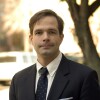The Wall Street Journal and Citi have announced that Medellín, Colombia, is the winner of the “City of the Year” competition, a global program developed in partnership with the Urban Land Institute to recognize the most innovative urban centers. More than 980,000 online votes were cast during the program.
The program was launched in June 2012 with a list of 200 cities compiled by the Urban Land Institute. Cities were selected based on eight criteria: environment and land use, culture and livability, economic/investment climate, progress and potential, places of power, education and human capital, technology and research, and mobility and infrastructure. Consumers were invited to vote online at wsj.com/ad/cityoftheyear. The three finalist cities were Medellín, Tel Aviv, and New York City.
“For over 200 years, Citi’s mission has been to enable progress,” said Francisco Aristeguieta, CEO, Citi Latin America. “We are committed to supporting the growth of Latin America, particularly vibrant and innovative cities like Medellín. We are pleased to sponsor the City of the Year competition, and congratulate Medellín on this global recognition.”
“The City of the Year program fostered dialogue among Journal readers and consumers and engaged the most powerful and influential audience in the world,” said Michael Rooney, senior vice president of the Wall Street Journal.
“Medellín stands today as an example for many cities around the world, because despite having lived very dark and difficult times 20 years ago, we have been undergoing a true metamorphosis,” said Mayor Aníbal Gaviria. “Going from pain and fear to hope, and now from hope to be a place filled with life, the city has known how to innovate in every step, both in social programs, urban developments, or the combination of both, and this has been key in the success of this process. In this sense, I would like to thank Citi, the Wall Street Journal and the Urban Land Institute for allowing us through the City of the Year to show to the world the things that are happening here and the tremendous challenges that lie ahead.”
Selection Process:
- The initial 200 cities were selected by the Urban Land Institute (ULI).
- The 25 semi-finalist cities were selected through weighted voting, composed of 25 percent public voting, driven by traditional and social media to the City of the Year site, and 75 percent ranking by ULI.
- The three finalist cities were selected by 50 percent public voting, 50 percent ranking by ULI.
- The winning city was determined 100 percent by public voting.



